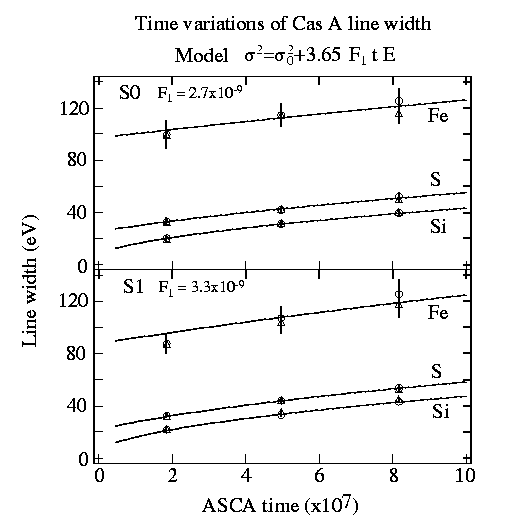SIS resolution degradation due to non-uniform CTI
Recent analysis of Cas A calibration data shows that the CTI effect (charge transfer inefficiency, due to charge traps caused by cosmic ray protons) are highly non-uniform. This can be seen in comparison of spectra taken in individual columns, and also in the measurements of parallel CTI at two different positions on the chip. As a result, it is estimated that the FWHM resolution at Fe K region has degraded from 130 eV at launch to 220-250 eV in Aug 1995 in 1-CCD mode data. At Si K, the degradation is from 72 eV to 110-120 eV. This effect scales roughly with the square root of energy.
Please note that this effect is separate from the previously reported RDD effect, which primary affects 4-CCD mode data (and also 2-CCD mode data, to a lesser extent).

The above figure shows measured line width (sigma) of 3 lines in 3 observations of Cas A. The triangles are measurements from data without, and the circles with, CTI correction. The latter have been fit to a phenomenological model in which the fano factor is increasing linearly with time. As shown, it results in an acceptable fit. We plan to implement this (or similar) phenomenological description of the degrading resolution in the next release of the SIS response builder.
Note added on 2001 March 30th: See here for an update.
If you have any questions concerning ASCA, visit our Feedback form.

